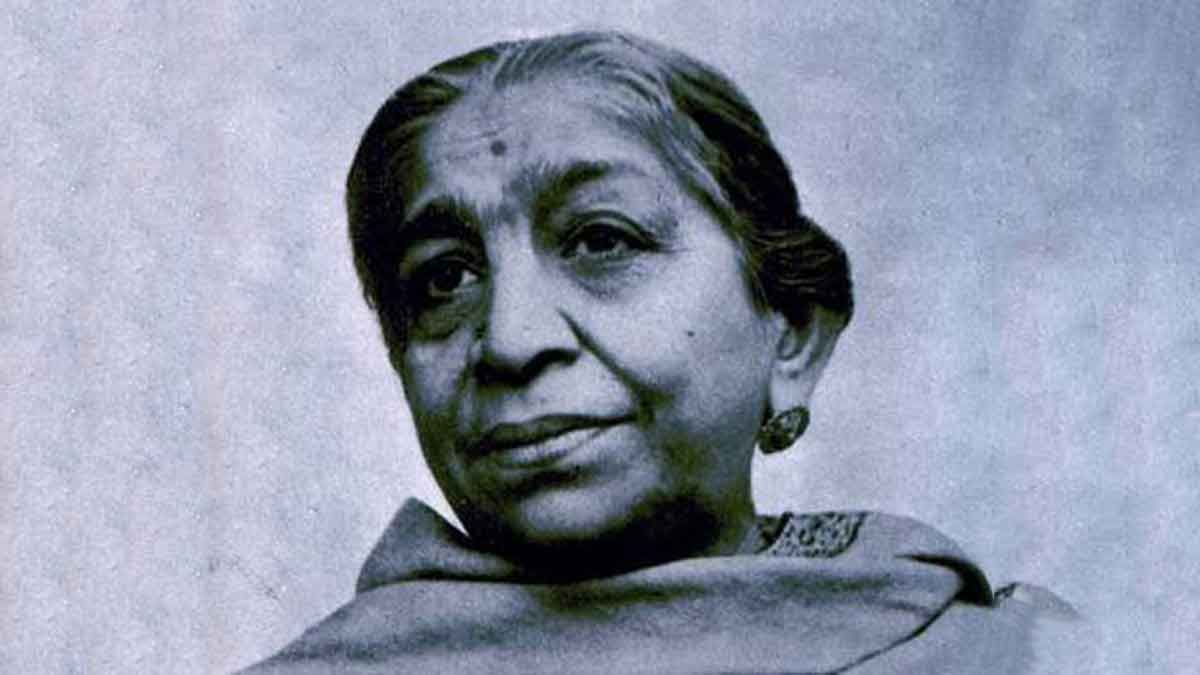
Today marks the death anniversary of one of the prominent figures of India’s struggle for Independence, Sarojini Naidu, who is respectedly referred as ‘Bharat Kokila’. Sarojini Naidu was a famous poetess, freedom fighter, social activist and great orator of her time. She was an inspiring woman who did several things to bring change in society that still inspires many people. A proponent of civil rights, women’s emancipation, and anti-imperialistic ideas, she was an important figure in India’s struggle for independence from colonial rule.
- Sarojini Naidu born on February 13 1879 in Hyderabad to Aghorenath and Sundara Devi Chattopadhyay, Sarojini Naidu belonged to a Bengali Brahmin family with her ancestral roots in Bangladesh. Aghorenath Chattopadhyay was the principal of the Nizam’s College with a doctorate of Science from Edinburgh University and Barada Sundari Devi Chattopadhyay, was a poet and used to write poetry in Bengali. Naidu was the eldest among her eight siblings.
- Naidu started her literary career at the age of 12. She gained recognition with her play, ‘Maher Muneer’. As a young child, she wrote a 1,300 line-long poem, ‘The Lady of the Lake’. At the age of 16, she received a scholarship from the Nizam of Hyderabad and went on to study at the London Kings’ College and became a revered poet of the 20th century.
- After finishing her studies, she married Paidipati Govindarajulu Naidu – a physician from Andhra Pradesh, in an inter-caste marriage which was called groundbreaking during those times.. The couple has five children.
- In 1914, Naidu met Gandhiji for the first time in England and was impressed by his thoughts and became devoted to the country. During the plague epidemic in India, the British government awarded her the ‘Kaisar-i-Hind’ medal for her work. However, after the Jallianwala Bagh massacre she returned the award in protest. She played a pivotal role during the Civil Disobedience Movement. She also faced arrest in 1942 during the ‘Quit India’ movement.
- In 1925, Sarojini Naidu became the first Indian woman President of the Indian National Congress. Later the first woman to be a governor of a state. She was appointed as the governor of the United Provinces, known as Uttar Pradesh today. She remained an active part of Indian politics even after Independence. She was the first woman Governor of the then United Provinces — from 15 August 1947 till her death on 3 March 1949.
- The political activist and poet was garnered with the title ‘the Nightingale of India’, or ‘Bharat Kokila’ by Mahatma Gandhi because of colour, imagery, and lyrical quality of her poetry. Sarojini Naidu was proficient in many languages like Urdu, Telugu, English, Bangla, and Persian. An irreverent disciple of the Father of the Nation, Naidu referred to Mahatma Gandhi as the ‘Chocolate-coloured Mickey Mouse’.
- Sarojini Naidu suffered a cardiac arrest and passed away on March 2, 1949, at Lucknow in Uttar Pradesh. In the year 1961, more than a decade after her demise, Naidu’s daughter Padma published a collection of poems that were titled, ‘The Feather of The Dawn’.
- India celebrates Sarojini Naidu’s birthday (February 13) as the National Women’s Day.

Post Your Comments